22 Nov Advances & Challenges in Private Label Cosmetic Packaging
Advances & Challenges in Private Label Cosmetic Packaging
Cosmetic packaging does more than protect formulas — it communicates brand values, sustainability credentials, and quality cues at a glance. As a leading private-label manufacturer, Cosmewax designs innovative, functional, and compliant packaging to stay competitive in demanding markets like the United States. In this interview format, we explain how we approach sustainability, customization, and speed-to-market while navigating day-to-day challenges in the packaging industry.
HOW dOES COSMEWAX tEAM iDENTIFY cURRENT tRENDS iN COSMETIC PACKAGING DESIGN AND FUCTIONALITY?
We continuously track launches from leading brands and top suppliers and attend major trade fairs such as Cosmoprof/Cosmopack, PCD, and LUXE PACK to spot new materials and technologies. This helps us stay aligned with real market demand and design/functionality trends.
U.S. market signals we watch
Retailer guidelines, consumer demand for eco-friendly formats, and competitive audits in the U.S. guide our proposals. We prioritize recyclability, reduced plastic, and premium finishes that resonate with American shoppers.
From trend to brief
When developing packaging, we focus on functionality first. We conduct thorough testing during the development process to ensure that the packaging performs well and works effectively with the specific product formula. As for the visual appeal of the packaging, this is more subjective and depends on factors such as the desired aesthetic and the target market. If the request comes from a client, it’s easier because we can refer to a specific benchmark. However, for internal developments, we follow market trends and look at leading brands for inspiration. Our goal is to create packaging that is attractive and effective as possible to ensure the product’s success.
What efforts is Cosmewax making to develop more eco-friendly packaging and reduce environmental impact?
We offer sustainable options for most components and keep testing new solutions. The market is increasingly aware of sustainability and now offers more eco-friendly alternatives, though some items still pose trade-offs between eco goals and performance.
Materials & formats popular in the U.S.
- rPET, glass, and aluminum for higher recyclability
- FSC-certified paper/boards and minimized secondary packs
- Refillable jars and airless systems to cut waste
- Clear disposal guidance on the pack to support consumer recycling
Managing constraints
Where components face barrier or compatibility limits, we run formula-pack tests, pilot runs, and supplier validations to ensure stability, safety, and shelf life without compromising the sustainability brief.
What key aspects do you consider when developing packaging that is functional and appealing to end consumers?
Functionality comes first: we evaluate compatibility, dosing accuracy, closure integrity, and transport robustness. Aesthetics follow — guided by the target market and brand positioning.
Protection & performance
For sensitive formulas, we consider airless packaging, UV-blocking coatings, oxygen barriers, and tamper-evident features to maintain efficacy from filling to last use.
Aesthetics & brand impact
Finish, color, texture, and decoration (e.g., soft-touch, matte, hot-foil, embossing) differentiate private label on shelf. We balance premium cues with cost and recyclability to achieve a compelling, sustainable look.
As a private label company, how do we integrate clients’ needs and specifications into design and development?
Long-term relationships let us anticipate needs and co-create solutions. Many clients share benchmarks and precise requirements, which accelerates alignment and improves outcomes.
OEM workflow for private label
We convert the brief into specifications (materials, wall thickness, closures), validate with samples and line trials, and iterate quickly with suppliers to lock the most reliable option.
Compliance & clarity
We prepare packs and labels with accurate ingredient listings, batch codes, usage instructions, and warnings in line with U.S. expectations, and include eco-icons/certifications where relevant to build trust.
What are the biggest challenges the R&D team faces when creating innovative and customized packaging?
Quality, performance, and deadlines are everyday challenges in a fast-moving category. Sourcing and validating new elements requires agility and tight coordination across stakeholders.
Lead times & MOQs
Customized components may involve higher MOQs and longer lead times. We mitigate risks with early forecasts, dual sourcing, and modular designs that reuse proven components across lines.
Cost vs. value
We weigh total cost of ownership (component, freight, defect rates, recyclability) against perceived value to help clients choose options that are competitive and durable.
Conclusion
Continuous innovation in cosmetic packaging comes from understanding market trends, client needs, and sustainability goals. Our packaging experts create solutions that perform, look premium, and meet strict quality expectations — positioning private-label brands to compete credibly in the U.S. market. If you’re developing a new line, we can help tailor custom packaging that aligns with your brand’s values and commercial targets.
Quick FAQs
Which sustainable materials are trending in U.S. cosmetics?
rPET, glass, aluminum, FSC-certified boards, and refillable systems.
How do you balance premium design with recyclability?
We combine mono-materials, minimal inks, and finishes chosen for recycling compatibility without losing shelf impact.
How do you keep timelines on track with custom packs?
Early spec freeze, parallel testing, and close supplier coordination reduce delays and scrap.


Sorry, the comment form is closed at this time.